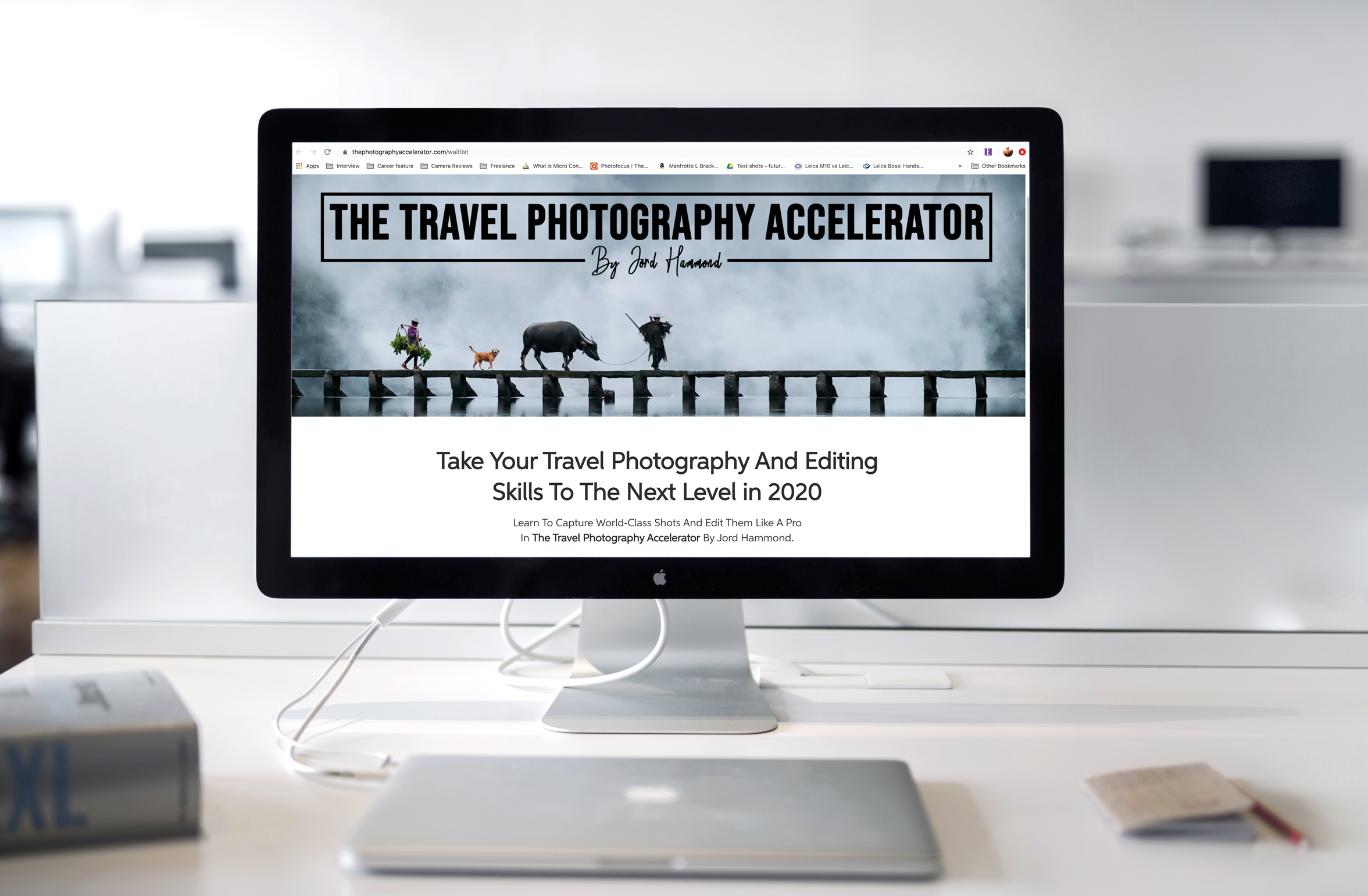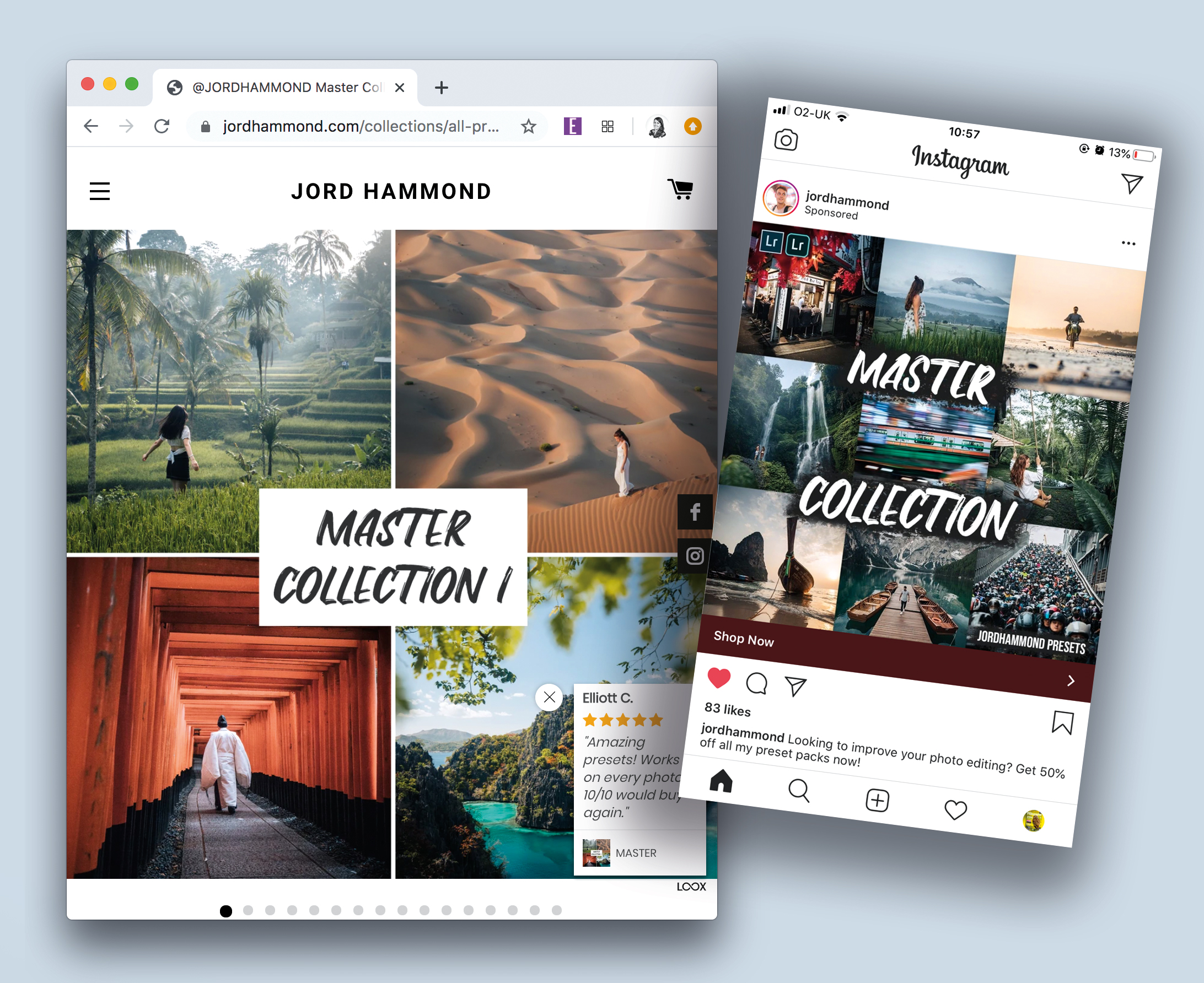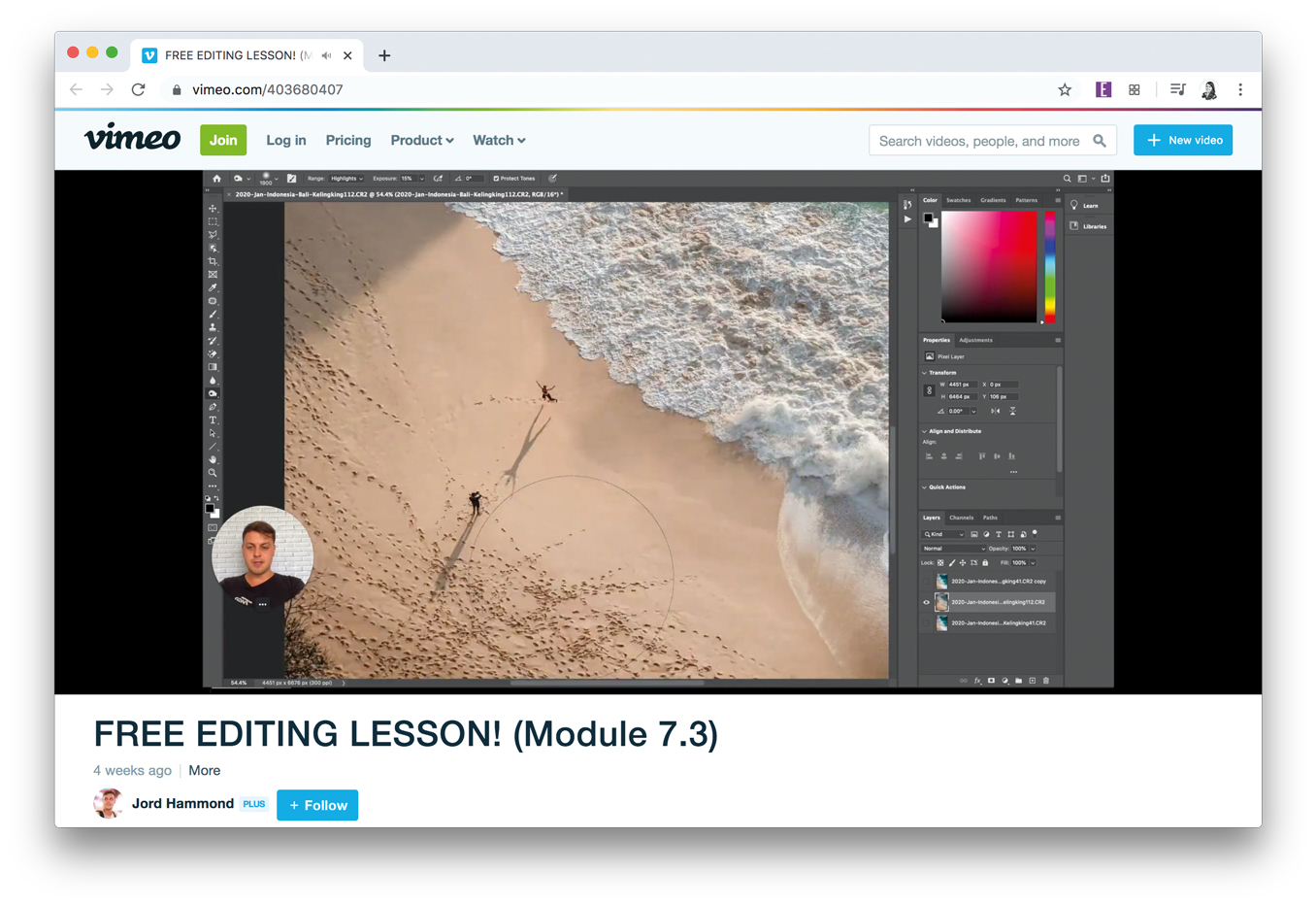5 steps to selling photo skills online: set yourself up as a photography educator
Craft a career as a photographic educator and add a lucrative revenue stream to your photography business

From high street studios to freelance photojournalists, photographers the world over have felt cause for concern over recent months. The restriction on travel, government closures of non-essential businesses, and a continuous decline in spending by customer bases are a sign of the difficult times we are currently experiencing.
For even the most well-established photographic businesses, these elements have the potential to severely impact the financial stability of hard-working photographers.
But the best way to secure yourself in any challenging market is to be adaptable and find alternative ways of using your skillset to generate income. A great way for experienced photographers to add another branch to their business model and bring in additional revenue is to provide tuition via online resources.
Some pros have created highly successful training websites and platforms, offering a range of tools for new photographers.
Here's some key tips for getting started. Plus, we quiz instagram sensation and travel photographer Jord Hammond for his tips on producing courses.
5 steps to launching a photo course
01 Have self-confidence
When your goal is to educate people, confidence is essential. We are all tempted to weigh up our own skills against others in our industry, but it is important for a teacher to convey a strong sense of belief in their approach to a topic.
The best camera deals, reviews, product advice, and unmissable photography news, direct to your inbox!
For most beginner courses you will be teaching the basics of photography, so there will be little room for doubt over the accuracy or usefulness of your content. For more advanced levels, however, don’t be afraid to encourage students to shoot in a similar manner to your preferences – as long as you have conviction, your advice will have value.
02 Choose your range
Just like when you select which genres of photography you would like to focus on behind the camera, choosing topics on which you will produce educational materials also needs to be carefully considered. Marketing yourself as a specialist has advantages in that you will be seen as an expert, attracting people who are looking to gain niche skills.
However, there is also a lot to be said for demonstrating a thorough knowledge of many subjects. This way you can appeal to students with a wider range of photographic interests, boosting takers for your courses.
03 Know your audience
In order to correctly pitch the difficulty level of your courses or tutorials, you need to know who will benefit from the information you provide. Many educators choose to feature beginner, intermediate, and advanced courses, but you have to be sure how you will delineate between these. What you consider to be intermediate, somebody else may find rather advanced – you are an expert after all!
To simplify the process, start with only novice and professional strands, making it easier to formulate in your mind which techniques will feature in which courses. Then you can use market research, through user feedback, to assess how well the materials you’ve created appeal to each level.
04 Make yourself available
An aspect that has the power to greatly increase your appeal as an educator among the competition is to promote your availability to clients. If they are able to contact you to ask questions, the proactive interaction will add real value to their learning experience.
You don’t need to be available at all hours, but regularly check a dedicated email address or forum, and respond to questions about the material with only minimal delay. A hands-on approach can strongly sell your brand.
05 Select your platform
This can be the most time-consuming stage of setting up the education arm of your business. You need to be able to offer recorded tutorials to your paying customers, while protecting your assets from illegal copying and distribution. DVDs are easy to produce but outdated and fiddly to produce on a large scale.
The most viable option is to have a reserved area of your existing website where users can access videos and downloads with a password. If you already have this functionality for photo galleries, use the infrastructure for your materials.
Learning platforms such as Skillshare are also a great home for hosting your tutorial content – especially if you're planning to teach others via video lessons.
Pro case study: Jord Hammond
Instagram sensation Jord Hammond shares tips for producing quality and profitable course material
How long have you been a photographer and producing courses and tutorials?
I started taking photos when I lived in China in 2015, but it only became my career a couple of years ago. I shot my first online course last year, as I saw a huge opportunity to teach what I have learnt over the years.
I have a non-traditional method of photography, and I realized that this has a lot of value for people who tend to overthink photography and editing. I wanted to show people that you don’t need the best camera equipment in order to achieve great results.
After the success of my first course and free tutorials, I will be releasing a second course over the summer.
What are the greatest challenges when establishing yourself as an educator?
For me, the biggest challenge was overcoming imposter syndrome. I knew that I have a lot of value to offer people, but when it came to actually making the course, I put it off because I questioned whether I was good enough to teach what I knew.
I thought that maybe if I learned about the more technical aspects of photography and editing first, then the course would be better, despite me never actually using these techniques in the field. I soon realised, however, that people like my course so much because I break everything down without being incredibly technical.
What are the first steps when starting down this career path – how do you let people know what you offer and how to access your material?
Having a decent social media following definitely helped me to start in the world of online courses, as I already had an audience, but you don’t need an audience to start making courses. All you need is a passion that you know you’re good at, which other people might want to learn to be good at too.
If you don’t have a social media platform dedicated to this passion I’d recommend starting an IG page beforehand so that you can start to attract potential customers. You can also do Facebook, Instagram and YouTube adverts that, if done right, can be a great way of finding customers. Giving lessons out for free and getting feedback and testimonials is also a great way of showing other people that you are an authoritative figure on the topic.
When it comes to making the course, all you need is a hosting platform, an online sales page, and content that engages the audience and actually teaches them something. I hired a course specialist to help with the construction of the course outside of making the course content, and getting a marketing strategy in place, which was one of the best investments I have made in my business.
However, if you have the time, you can absolutely learn how to do all of that yourself. And from there, promote on social media and sell!
How do you decide what the focus of your courses and tutorials should be – are they centred around your areas of expertise?
I realised while making the course that I am not an expert on everything to do with photography, and that’s okay. The most important thing for me was teaching my approach, not how you “should” take and edit photos.
For example, I don’t really tend to use Photoshop to replace skies, so I don’t teach that in my course. There are plenty of expert sky-replacers out there with fantastic courses, and I didn’t feel the need to teach this myself.
People want to know how you do something, and all you can teach them is that. I tried to break down my course into easy steps covering photography and editing, and the next course over the summer will be on how to make a business through photography.
Many people bundle these topics in one course, but I’ve decided not to because I don’t want to give the false impression that by purchasing a course on photography and how to make money, you’ll definitely make money from it. I wanted to encourage people to focus first on their skills.
For more on Jord’s work and his courses and presets, check out www.jordhammond.com or @jordhammond.
Read more
10 tips for Instagram success with your photography
Go viral as a photographer: 6 steps for improving your social media success
20 famous photographers you should follow on Instagram
The best professional cameras in 2020
Digital Photographer is the ultimate monthly photography magazine for enthusiasts and pros in today’s digital marketplace.
Every issue readers are treated to interviews with leading expert photographers, cutting-edge imagery, practical shooting advice and the very latest high-end digital news and equipment reviews. The team includes seasoned journalists and passionate photographers such as the Editor Peter Fenech, who are well positioned to bring you authoritative reviews and tutorials on cameras, lenses, lighting, gimbals and more.
Whether you’re a part-time amateur or a full-time pro, Digital Photographer aims to challenge, motivate and inspire you to take your best shot and get the most out of your kit, whether you’re a hobbyist or a seasoned shooter.






